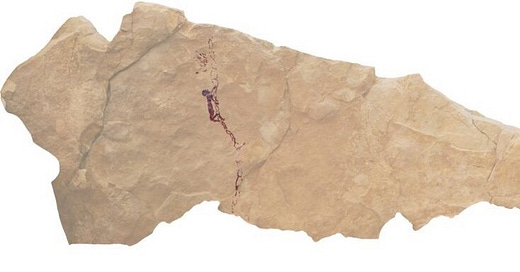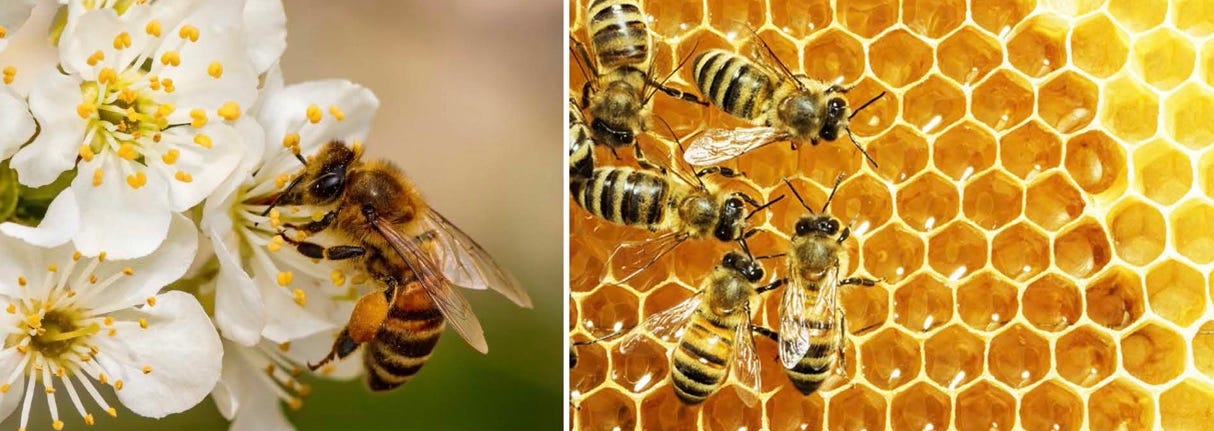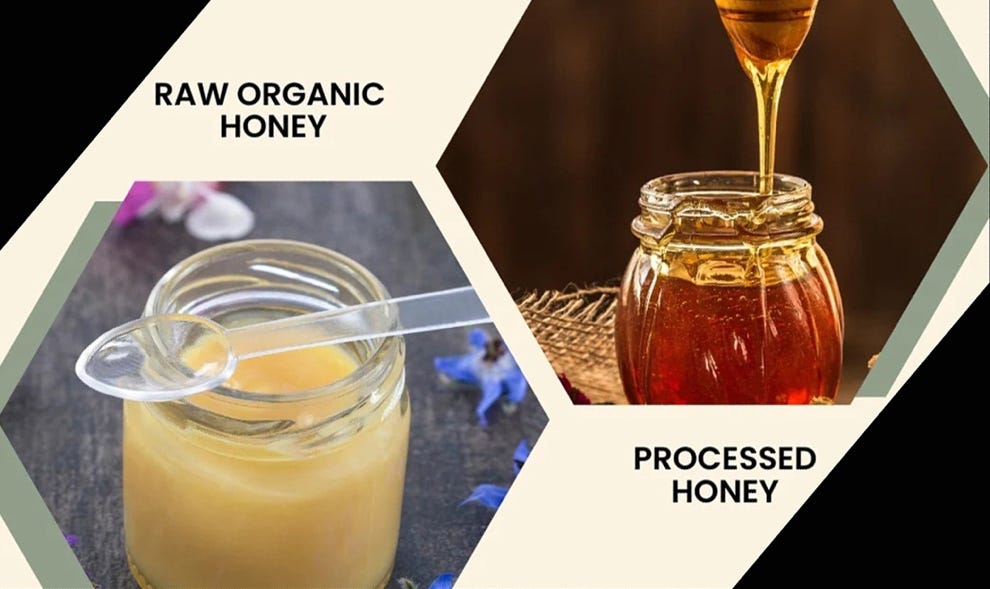We humans owe our existence to our sweet tooths. Our pre-historic ancestors had only their powers of observation as they foraged for food and their accumulated-to-then cultural knowledge as their basis for survival and evolution. Early humans were much more attuned to their environment than we desensitized modern humans. They observed what and how animals fed themselves and their young, and emulated their behaviors. While not totally foolproof, some animals can eat things poisonous to humans, trial and error were demonstrable teachers. Further, early humans had a highly developed sense of taste; they could readily distinguish between bitterness and sweetness. Fortunately, Mother Nature lent a helping hand. In nature many poisonous plants have a bitter taste and safely edible plants a sweet taste. Thus, we can genetically directly trace today’s sweet tooth to pre-historic ancestors. Staughton, J., “Before Science And Research, How Did Humans Know What To Eat And What to Avoid,” ScienceABC (Oct 19, 2023). https://www.scienceabc.com/humans/before-science-and-research-how-did-humans-know-what-to-eat-and-what-to-avoid.html; Patil, V., “How Have We Evolved To Crave Sugar?” ScienceABC (Oct 19, 2023). https://www.scienceabc.com/social-science/why-do-we-crave-sugar.html
There was another factor at play for our pre-historic ancestors, the need for calories to sustain body functions. To state a very gross oversimplification, our bodies run on sugar, predominately glucose. Although there are other energy sources that help “fuel” the cells of our bodies, glucose provides balanced and high-yield energy. In whatever form other energy sources enter the body, they are all ultimately converted to glucose. As our pre-historic ancestors foraged for food to survive, they were naturally attracted to the sweetest foods. The working assumption was the sweetest foods were the most calorie dense and thus contributed the most to sustenance and evolution. Prinz, P., “Sweetness preference and its impact on energy intake and body weight - a review of evidence,” Front Nutr 10:1289028 (Oct 18, 2023). https://doi.org/10.3389/fnut.2023.1289028
There is evidence that our pre-historic ancestors were attracted to honey as an energy-dense food source. While there does not appear to be any archeological evidence of honey collection, rock art depicting swarms of bees, honey collecting and honeycombs has been found in Africa, Europe, Asia and Australia and has been dated to as long ago as 40,000 years ago. In northeastern Spain in the Iberian Mountains archaeologists discovered a 7,500-year-old cave painting of a figure climbing a rope ladder to reach a colony of bees, shown below. Aside, how did they prevent getting stung? Does this rock art also depict beekeeper apparel to prevent stings? Wayman, E., “Humans, the Honey Hunters,” Smithsonian (Dec 19, 2011). https://www.smithsonianmag.com/science-nature/humans-the-honey-hunters-9760262/; Crittenden, A., “The Importance of Honey Consumption in Human Evolution,” Food and Foodways 19(4), 257–273 (2011). https://doi.org/10.1080/07409710.2011.630618; Saed, O., “Found: A 7,500-Year-Old Cave Painting of Humans Gathering Honey,” Atlas Obscura (Dec 16, 2021). https://www.atlasobscura.com/articles/honey-cave-painting
We all know that honey comes from bees, but how? The process is highly choregraphed, starting with worker bees foraging for flowers from which to collect nectar or pollen. Most amazing is they seek only a single floral source, like clover, or lavender, or apple, or blackberry, or … for which they will travel up to five miles from the hive to visit as many as a hundred flowers per outing to suck nectar from the flower’s stamen. The single floral source focus is one of Mother Nature’s methods to assure cross-pollination.
The worker bees are very efficient; if you watch bees working, they do not linger on a particular flower. The worker bees have a special stomach in which to store up to their own body weight in nectar. Beyond carriage, that special stomach starts to break down complex sugars into simple sugars.
Arriving back at the hive, the worker bees are met by gatekeeper house bees who taste the nectar load and either accept or reject it. Accepted nectar is transferred from the worker bee’s stomach to the house bee’s stomach. The house bee delivers the nectar to the hexagon-shaped beeswax cells of the honeycomb. Rejected worker bees stay in the hive to help until needed to again become a forager. The rejected nectar is consumed by the bees themselves for fuel.
Occasionally the arriving worker bees are rejected because they are intoxicated from accidentally consuming fermented nectar. Just like humans, the worker bees fail a field sobriety test; they cannot fly properly. When the worker bees make it to the hive, the house bees can detect the alcohol in the worker bee’s breath and push them out of the hive.
Worker bees inside the hive start the process of transforming the collected nectar into honey by chewing it for about half an hour. The chewing is a shared effort amongst a number of worker bees. This process alters the chemical properties of the nectar and changes it pH as it mixes with enzymes from the bees. It also starts the honey drying process. When the initial 70 percent water content is reduced to 17 to 20 percent, the honey is ready.
See, Wood, P., “How Do Bees Make Honey? A Beginner’s 5-Step Guide,” (Apr 15, 2023). https://beeprofessor.com/how-do-bees-make-honey/; Curiosity Ship, “How Bees Get Drunk and Rejected by Their Hives,” (Oct 10, 2023). https://aiadvises.wordpress.com/2023/10/10/how-bees-get-drunk-and-rejected-by-their-hives/
Terroir is a French term used to describe the environmental factors that affect a crop's phenotype, including unique environment contexts, farming practices and a crop's specific growth habitat. (“Phenotype” means the observable physical or biochemical characteristics of an organism, as determined by both genetic makeup and environmental influences.) Collectively, these contextual characteristics are said to have a character; terroir also refers to this character. Some artisanal crops and foods for which terroir may apply include wine, cheese, coffee, single malt whisky, onions, and tea. Today, terroir is dominant in wine and, to a lesser extent, cheese. There is a growing trend towards applying the concept of terroir to agriculture and agricultural practices, especially those associated with regenerative agriculture.
Over the centuries, French winemakers developed the concept of terroir by observing the differences in wines from different regions, vineyards, or even different sections of the same vineyard. The French began to crystallize the concept of terroir as a way of describing the unique aspects of a place that influence and shape the wine made from it.
The concept of terroir basically means “of this place.” It says that the taste, nutrition and health effects of the foods we eat result from the characteristics of the land, the way the environment around the land and the land itself is treated, the way the crops are treated, and the processes through which the crops are converted to food.
Clearly, the concept of terroir also applies to honey. The composition, color, aroma and flavor of honey depend mainly on the flowers, geographical regions, climate and honeybee species involved in its production. Those attributes are also affected by how the nectar is processed in the hive, and how it is stored. As with wine, honey is also affected by weather conditions, both during collection of nectar as well as how long it has been stored in the honeycomb. It also undergoes changes in composition in storage from chemical reactions including fermentation, oxidation, and thermal changes. Escuredo, O., et al., “Contribution of botanical origin and sugar composition of honeys on the crystallization phenomenon,” Food Chem 149:84-90 (2014). https://doi.org/10.1016/j.foodchem.2013.10.097; Tornuk, F. , et al., :Quality characterization of artisanal and retail Turkish blossom honeys: Determination of physicochemical, microbiological, bioactive properties and aroma profile,” Industrial Crops 46:124–131 (2013). https://doi.org/10.1016/j.indcrop.2012.12.042; Moreira, R., et al., “Chemical changes in the volatile fractions of Brazilian honeys during storage under tropical conditions,” Food Chem 121:697-704 (2010). https://doi.org/10.1016/j.foodchem.2010.01.006; Missio da Silva, P., et al., “Honey: Chemical composition, stability and authenticity,” Food Chem 196:309-323 (2016). https://doi.org/10.1016/j.foodchem.2015.09.051
Besides feeding our sweet tooths, what do we get from honey? Honey is essentially pure sugar. However, in its natural un-industrialized form, honey is filled with significant micronutrients such as vitamins, minerals, antioxidants such as flavonoids and phenolic acids, and health-promoting polyphenols. That honey is almost pure sugar means it should always be eaten or used in moderation. Honey offers slight benefits over sugar with respect to managing blood sugar levels and reducing inflammation. It helps lower blood pressure, regulation of your heartbeat, and propolis in raw honey helps improve cholesterol and triglyceride levels. Historically, honey was used as a topical wound and burn treatment to encourage healing, a practice which is still common today.
Palma-Morales, M., J. Huertas & C. Rodríguez-Pérez, “A Comprehensive Review of the Effect of Honey on Human Health,” Nutrients 15(13):3056 (Jul 6, 2023). https://doi.org/10.3390/nu15133056; Ranneh, Y., et al., “Honey and its nutritional and anti-inflammatory value,” BMC Complement Med Ther 21(1):30 (Jan 14, 2021). https://doi.org/10.1186/s12906-020-03170-5; Ajibola, A., J. Chamunorwa, and K. Erlwanger, “Nutraceutical values of natural honey and its contribution to human health and wealth,” Nutr Metab (Lond) 9:61 (Jun 20, 2012). https://doi.org/10.1186/1743-7075-9-61; Cianciosi, D., et al., “Phenolic Compounds in Honey and Their Associated Health Benefits: A Review,” Molecules 23(9):2322 (Sep 11, 2018). https://doi.org/10.3390/molecules23092322; Bt Hj Idrus, R., et al., “Cardioprotective Effects of Honey and Its Constituent: An Evidence-Based Review of Laboratory Studies and Clinical Trials,” Int J Environ Res Public Health 21;17(10):3613 (May 202). https://doi.org/10.3390/ijerph17103613
Raw versus processed honey; you know which is better. Raw honey comes directly from the hive. It is typically strained but not filtered, and as such retains bee pollen, propolis, and small wax particles. (Propolis, or bee glue, is a resinous mixture that honey bees produce by mixing saliva and beeswax with exudate gathered from tree buds, sap flows, or other botanical sources that is used as a sealant for unwanted open spaces in the beehive.)
Raw honey has a richer and more complex flavor profile, and is rich in vitamins, minerals and enzymes beneficial for health. On the other hand, processed honey, known as commercial or regular honey, undergoes more extensive processing to improve its appearance and, most importantly, its shelf life. Filtration removes impurities and pollen. Pasteurization extends shelf life by killing yeast to prevent fermentation, the heat of which also destroys beneficial enzymes. Processed honey is often blended for consistent taste and texture. Over time raw honey changes color and flavor, but remains safe for consumption. Raw honey often appears cloudy
Honey does not spoil or go bad if properly stored; tightly sealed in a cool, dark place. Its high acidity and low moisture make it inhospitable to bacteria. If left exposed or contaminated, it will spoil.
Both raw and processed honey will crystallize over time. You can use the crystals or convert them back to a liquid using a warm water bath.
Dark honey usually has a more intense, pungent taste than light honey.It contains less water and more nutrients than light honey, and it thicker and richer in taste.Dark honey is higher in antioxidants, anti-inflammatory and antibacterial properties than light honey.
What’s your preference? The adage “shop locally” still applies. The question, however, what is local with respect to the worker bees? Where are the hives? What grows in the sourcing range of the hives (remember the five- mile search radius)? What is the condition of the flowering plants in the sourcing range?
Back to terroir. Grandfather Ciacci was a beekeeper and produced honey on a small farm on the outskirts of Montalcino, Italy. The family decided they wanted to take advantage of the uniqueness of the valley in which the farm is located, so the profits from honey sales went into more land to plant vineyards and olive trees. The bees are still there, and still busy. Today the organic farm under the stewardship of grandsons Dario and Federico produces not only honey but also extra virgin olive oil and Brunello di Montalcino, Rosso di Montalcino, and Grappa di Brunello.
You can check out “Bobby and Giada in Italy,” staring Chefs Bobby Flay and Giada De Laurentiis, on the Food Channel. In episode four 4 they visit Azienda Agricola Villa I Cipressi to taste the honey (and the wine …). Fabulous on all counts.
By the way, the Zebra label on the Villa I Cipressi Brunello is taken from the wall painting by the brothers and their mother in the tasting room.












I love honey on bagels w/creme cheese and on peanut butter sandwiches instead of jam and in sauces/marinades instead of sugar. One of my cousin’s daughters is an apiarist taking hives of bees to orchards for pollination. My cousin, her father, who is 6’8”, after going to West Point and serving in the military has been an independent long haul trucker for many years and transports the hives in his truck! At the wedding of one of my other cousin’s daughters they gave out little jars of honey as favors!